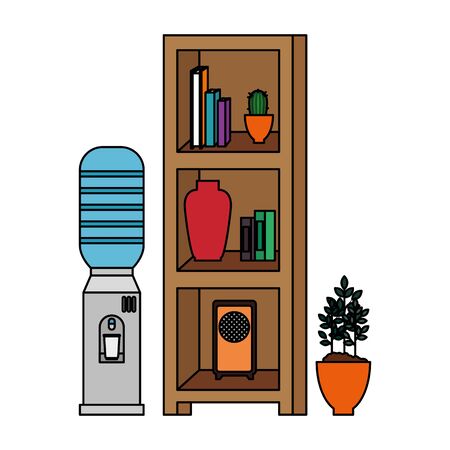Understanding British Light: Natural and Artificial Sources
When considering paint for your home, it’s crucial to appreciate how light interacts with your living spaces, especially within the unique context of British homes. The UK’s climate is known for its variability; overcast skies, frequent rain, and shorter daylight hours during much of the year mean that natural light can be both limited and diffuse. This soft daylight often gives rooms a cooler, muted feel compared to sunnier climates. Additionally, the orientation of your windows—whether they face north, south, east, or west—dramatically affects the quality and intensity of incoming daylight. North-facing rooms tend to feel cooler and receive less direct sunlight, while south-facing spaces benefit from warmer, brighter light throughout the day. East-facing rooms are bathed in morning sun but quickly lose brightness as afternoon approaches, whereas west-facing rooms catch the golden glow of evening light. Beyond natural sources, artificial lighting plays a vital role in shaping colour perception indoors. The warmth or coolness of bulbs—ranging from traditional incandescent to modern LEDs—can alter how paint colours appear on your walls. In Britain, where lamp-lit evenings are common for much of the year, understanding these lighting nuances will help you make more informed decisions when selecting paint, ensuring your chosen hues look just as you imagined them in every season.
2. The Role of Light in Perceiving Paint Colours
Understanding the nuances of British daylight is crucial when selecting paint for your home. Unlike many parts of the world, the UK experiences a unique range of lighting conditions that can dramatically shift how paint colours appear throughout the day. Whether it’s a grey Lancashire morning or a rare sunny afternoon in Cornwall, light transforms hues and undertones on your walls—sometimes in surprising ways.
How Light Changes Throughout the Day
British homes are subject to ever-changing skies. The interplay of cloudy, sunny, morning, and evening light can make a single paint colour seem like several different shades. For example, what appears as a soft cream in morning light might look almost yellow under the midday sun or muted beige during an overcast afternoon.
Comparing Lighting Conditions
| Light Condition | Effect on Paint Colour | Typical British Example |
|---|---|---|
| Cloudy/Overcast | Mutes colours; cool undertones emerge | A common scenario across most UK regions |
| Sunny Midday | Enhances brightness and warmth; yellows intensify | Occasional clear days in southern England |
| Morning Light | Softer, sometimes blue-tinted; makes whites look crisp | Early hours, especially during spring and autumn |
| Evening/Golden Hour | Adds warm glow; reds and oranges become richer | Sunset views from west-facing windows |
Why This Matters for British Homes
The unpredictable weather and shifting daylight mean that paint samples should always be tested on your actual walls at different times of day. A shade that looks perfect under shop lighting may not behave as expected once exposed to true British light cycles. By being mindful of this science, you can avoid disappointment—and achieve the desired look—regardless of what the weather throws your way.

3. Common Mistakes: Why UK Paint Choices Often Disappoint
Many British homeowners find themselves dissatisfied with their freshly painted interiors, and this frustration is rarely just down to colour preference alone. One of the most prevalent pitfalls is underestimating the impact of Britain’s famously gloomy weather. With long stretches of overcast skies and limited natural daylight—especially during autumn and winter—the true nature of a paint colour can be drastically altered. What appears as a warm cream on a sunny day may shift to a dull beige under persistent cloud cover, leaving rooms feeling unexpectedly cold or drab.
Another frequent mistake is misunderstanding lighting warmth. In the UK, older properties often feature a mix of cool daylight bulbs and warmer incandescent or LED lights, yet homeowners rarely test paint samples under these varying conditions. A colour that looks inviting in a shop’s bright artificial light can appear flat or even starkly blue-toned at home, particularly in north-facing rooms which naturally receive cooler light.
Additionally, there’s a tendency to overlook how small architectural features—like deep skirting boards, alcoves, or traditional sash windows—affect the way light moves through a room. This is especially critical in many Victorian or Edwardian homes found throughout the UK. Shadows cast by period details can darken corners, further muting pale colours or intensifying deeper shades in unpredictable ways.
The habit of choosing paints based on online swatches or catalogue images rather than physical samples is another stumbling block. Digital representations are not tailored to British weather conditions or the unique interplay between indoor and outdoor lighting found here. Without real-world testing, homeowners risk disappointment once the paint is up on their own walls.
Ultimately, overlooking these scientific factors—weather patterns, lighting types, room orientation, and architectural quirks—leads to results that often fail to meet expectations. A little engineering curiosity and practical experimentation go a long way towards ensuring your chosen palette truly shines in your specific corner of Britain.
4. Testing Paint Colours: British Best Practices
Choosing the right paint colour for your home in the UK is more than just picking a shade from a chart. Given our famously variable weather, diverse housing stock, and the interplay of natural and artificial light, testing paint in situ is essential. Here are some tried-and-tested methods that work particularly well in British homes.
Large Swatches Over Tiny Chips
Paint colour cards from DIY shops or decorators’ merchants often look tempting, but these small samples rarely reflect how a hue will perform on your walls. For best results, request tester pots of your shortlisted colours and create large swatches—at least 50cm x 50cm—directly onto the wall. If you’d prefer not to mark your plaster, paint sheets of lining paper and temporarily tack them up; this approach works especially well for renters.
Observe at Different Times of Day
The same paint can shift dramatically from morning to evening due to changes in daylight and the UK’s unique latitude. To avoid surprises, check your swatches at various times:
| Time of Day | Typical Light Quality (UK) | What to Look For |
|---|---|---|
| Morning | Cool, bluish light | Does the colour feel fresh or too stark? |
| Noon | Brightest, natural white light | Is the hue true to your expectations? |
| Afternoon | Softer, warmer light (especially in south-facing rooms) | Does the colour appear richer or yellowed? |
| Evening | Mainly artificial lighting (warm white or cool LED) | Does it complement your chosen bulbs? |
Consider Room Orientation and Local Conditions
A north-facing room in Manchester receives different natural light compared to a south-facing lounge in Brighton. North-facing rooms tend to enhance cooler tones, making blues crisper but sometimes making greys feel dreary. Conversely, south-facing rooms amplify warm undertones. Always sample in the actual space and note how local climate—frequent cloud cover versus occasional sun—affects appearance.
Top Tips for British Homes
- Leave swatches up for at least 48 hours before deciding.
- If possible, test paint on multiple walls (window wall vs. opposite wall).
- Ask friends or neighbours locally about their experiences with similar colours; regional quirks often emerge.
Avoiding Common Pitfalls
Avoid applying testers over existing bold colours without priming; they may skew results. Also, remember that magnolia under artificial lighting can look vastly different than a trendy grey or green during a rare sunny afternoon.
5. Balancing Tradition and Modernity in British Interiors
The interplay between traditional and modern aesthetics is central to British interior design, particularly when it comes to selecting paint under the unique lighting conditions of UK homes. Classic palettes—think muted greens, soft creams, and heritage blues—have long been favoured for their ability to harmonise with the often subdued natural light found across much of Britain. These timeless hues can enhance period features such as ornate cornices or Victorian fireplaces by reflecting gentle daylight, creating a sense of calm continuity.
However, contemporary trends are making their mark too. Modern interiors increasingly incorporate bolder tones, crisp whites, and contrasting accent walls to invigorate spaces and combat the sometimes grey British weather. Paint finishes with a subtle sheen can add vibrancy even on overcast days, while matte options help absorb excess brightness in sunnier south-facing rooms.
For homeowners seeking to honour both tradition and innovation, the key is thoughtful balance. In a Georgian terrace with generous sash windows, for instance, you might pair classic off-white walls with modern pops of teal or mustard in alcoves or skirting boards. Conversely, a new-build flat may benefit from grounding contemporary open-plan layouts with period-inspired colours that echo Britain’s architectural heritage.
Ultimately, successful use of paint in British homes means understanding how chosen colours interact with available light—and being willing to experiment. Sample pots and careful observation throughout the day will help you discover which shades truly bring your home’s character to life, blending old and new in a way that feels both authentic and fresh.
6. Key Takeaways and Expert Advice for British Homeowners
Actionable Steps for Choosing Paint with Light Science in Mind
To ensure your paint choices make the most of the unique lighting conditions in British homes, begin by identifying the orientation of each room—north-facing rooms often benefit from warmer tones, while south-facing spaces can handle cooler or bolder colours. Always test paint samples on different walls and observe them at various times of day to see how natural and artificial light affect the hue. Don’t underestimate the influence of weather; overcast skies typical to the UK may mute certain shades, so opt for colours with a touch more vibrancy than you might initially expect.
Leverage Trusted Local Resources
Make use of local paint suppliers who are familiar with UK-specific lighting challenges. Many offer sample pots and expert advice tailored to British properties, helping you avoid costly mistakes. Additionally, consult resources such as the Dulux Colour Advice, Farrow & Ball Colour Consultancy, or even reach out to local interior designers experienced in British home environments.
Summary of Best Practices
– Assess room orientation and daylight exposure before selecting paint
– Test samples in situ under both daylight and artificial light
– Choose slightly warmer or brighter shades for north-facing or dimly lit rooms
– Consult local experts for guidance on products suited to the UK climate
– Take advantage of online tools and colour consultancy services offered by established British brands
By following these evidence-based steps and tapping into trusted local expertise, you’ll ensure your chosen paint not only looks beautiful but also harmonises with the unique interplay of science and light found in British homes.


